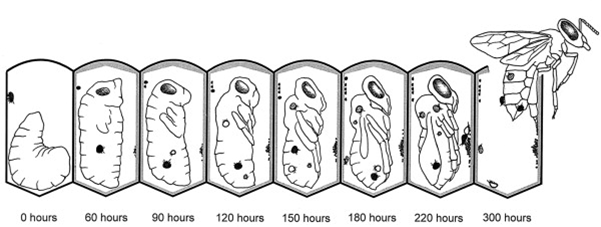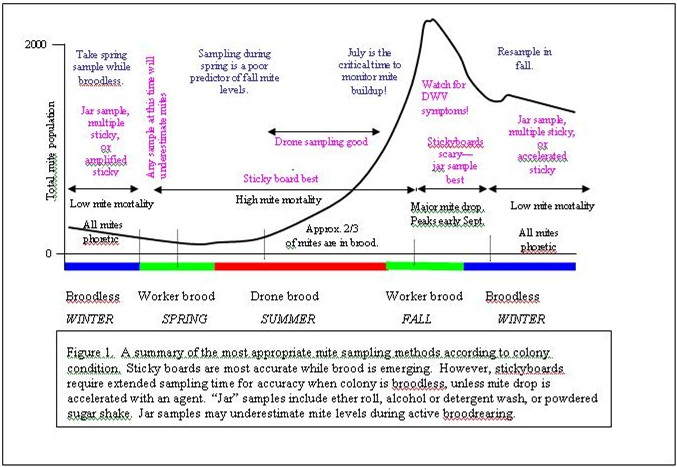July is the beginning of a difficult season for beekeeping in southern Oregon. Most wax is drawn by now, and the summer dearth begins. It will be difficult to get the bees to make wax without stimulative feeding. Most honey production is done for the year, so get it harvested and manage the health of the hive.
Start Counting Mites – July is the critical month for monitoring mite buildup.
- Only treat for mites if necessary. Do a mite count first.
- Follow the instructions carefully for the mite treatment chosen.
- Rotate treatments (preferably organic acids and essential oils) to prevent creating resistant mites.
- Do a mite count test after treatment to make sure that it was effective.
See Also: July is Mite Checkin’ Time! and How to Sample Bees for a Varroa Mite Count. You can make your own version of Apiguard as one option for an organic treatment after honey has been harvested.
Avoid Robbing Behavior
- Be careful with exposed honey and food
- Consider robber screens if necessary.
- Enter the hives as briefly and as little as possible. This will reduce stress on the hive. Do not open the hive when the temperature is above 94 degrees.
- Robbed hives can be failing and the diseases and bacteria will be picked up by the robbers.
- Sometimes you can distract robbers by setting up an open feeding station at least 30 yards away from the apiary.
Feed light syrup if necessary, or drivert sugar
- If you are using syrup to feed, use 2 parts water to 1 part sugar.
- Add syrup in the late evening to discourage robbing.
- If you are using syrup to feed during the forage dearth, it is better to feed the entire bee yard. Feeding only the smaller hives will result in robbing by the nearby healthy hives. Either feed them all or separate them into separate yards.
- Feed drivert sugar to avoid the robbing that can occur with syrup. Spritz the drivert with a syrup and essential oils (such as Honey Be Healthy or ProHealth) mixture to encourage the bees to use the drivert.
- If you decide to open feed, put the food source at least 30 yards away from the apiary. NOTE that open feeding can result in the spread of pathogens if there is an unhealthy situation in the apiary.
Consider feeding pollen substitute
- Drought years require more supplemental feeding. Bees need both carbohydrates (syrup or drivert) and protein (pollen).
Watch for signs of brood disease
- Consider combining smaller hives with bigger ones. Nursing a failing hive may not be worth the effort. It is better to devote your resources to the healthy hives.
- The window will be closing soon to get hives healthy enough to survive the winter. You can do something now about heavy mite loads. If you wait until August, you don’t have much time to fix the situation.
Adapted from a presentation by John Jacob from Old Sol Apiary and reprinted with permission.
‘Bee on Sunflower’ image courtesy of Shari Shattuck


